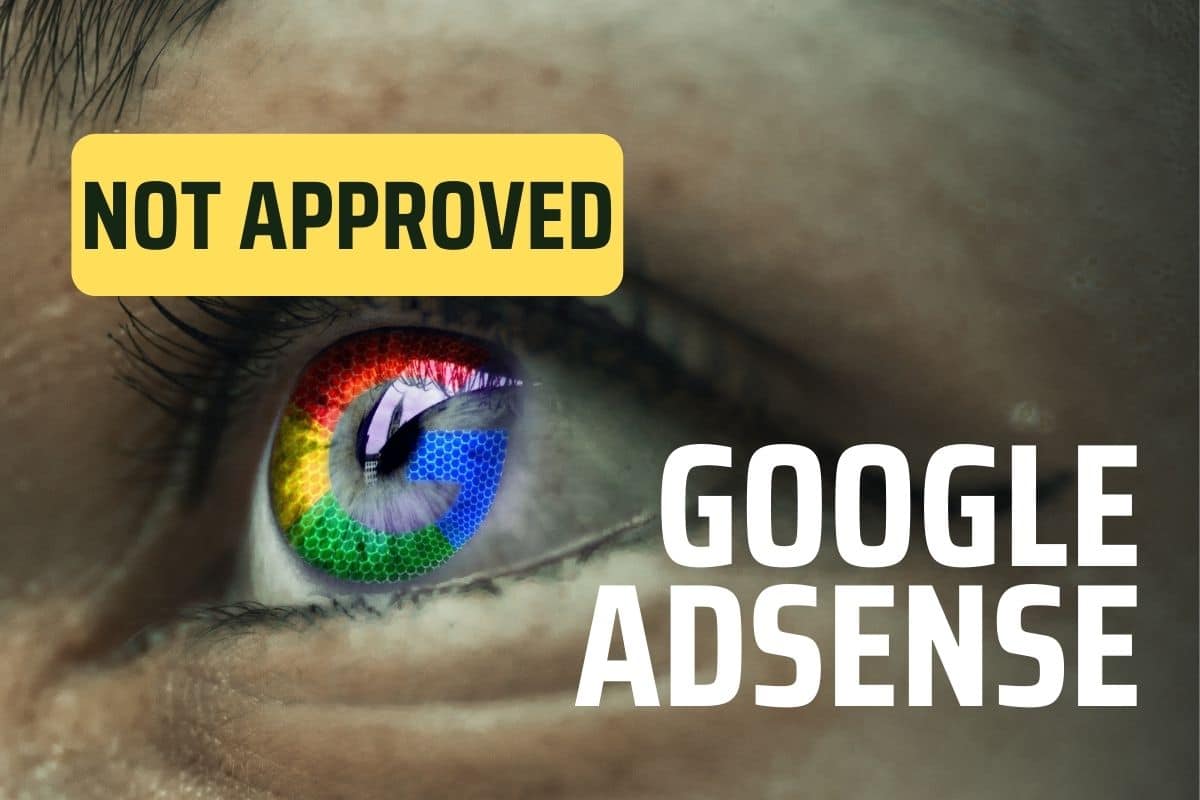
Embarking on the journey with Google AdSense and striving for AdSense approval can feel like a maze, especially when you encounter hurdles like your application being denied due to policy violations or issues with content quality. This article aims to simplify the process and guide you on how to navigate the roadblocks in the AdSense landscape, reducing the confusion and frustration you may feel.
Google AdSense employs a variety of metrics when scrutinizing websites, considering factors such as organic traffic, user experience, website design, and crucially, the strict adherence to AdSense policies. Gaining comprehensive insights into these elements can empower you to make judicious decisions when optimizing your website to comply with Google’s criteria and achieve a high degree of SEO salience.
In the course of this article, we will equip you with practical tips and insights to bolster your chances of gaining AdSense approval. Whether it’s a duplicate account issue, dealing with a site that’s deemed low value content, or a problem with your ads.txt file, we’ve got you covered. By adhering to best practices, addressing multiple disapprovals and enhancing ad placement, you’ll be better prepared to build a website that aligns with Google’s expectations, thus paving the way to successful monetization through AdSense advertising.
Understanding Google AdSense
Google AdSense is a widely popular advertising program that enables website owners and bloggers to monetize their online content by displaying relevant ads on their site. By participating in this program, publishers can generate revenue on a per-click or per-impression basis, creating an additional income stream for their digital properties.
Getting started with AdSense is fairly simple. First, website owners need to apply for an account, which involves submitting relevant website information and agreeing to Google’s terms and policies. Once the account is created, Google will review the application to ensure that the site meets its specific guidelines and requirements.
During the approval process, the website must comply with Google’s policies and quality guidelines. Some key factors that Google AdSense takes into consideration include the uniqueness and usefulness of the content, website design and navigation, and the presence of essential website pages such as About, Home, and Info. A well-organized site plan that offers great content, easy navigation, and useful details for visitors is more likely to be approved by the AdSense program.
It is not uncommon for websites to be rejected by Google AdSense during the initial review. However, understanding the common reasons for disapproval can help you address the issues and reapply for the program. These reasons may include:
- Insufficient or low-quality content
- Duplicate or plagiarized content
- Inappropriate or explicit content
- Technical issues, such as slow site load times or broken links
If a website does not pass Google’s evaluation, they will typically notify the publisher via email, detailing the reasons for disapproval and suggesting ways to address these issues. Website owners should carefully review the feedback provided by Google, make the necessary adjustments to their site, and then submit a new application for approval.
Reasons for Site Disapproval – Why was your site rejected by Google AdSense?
Google AdSense might reject a website application for various reasons. While the exact wording in a denial reason can vary, here are the most common messages you might receive:
- Insufficient Content: “Your website doesn’t have enough text on for Google specialists to review.”
- Low Value Content: “The content on your website doesn’t provide enough value to your readers.”
- Unacceptable Site Content: “Your website contains content that we don’t allow at this time.”
- Site Does Not Comply With Google Policies: “Your site appears to violate Google’s policies.”
- Site Under Construction: “It appears that your website is not yet complete.”
- No Organic Traffic: “Your site doesn’t comply with our guidelines because it doesn’t receive any organic traffic.”
- Unable to Review Website: “We’re unable to review your website.”
- Duplicate Account: “It appears that your Google AdSense account is a duplicate of an account that’s already active.”
- Ineligible for MCM (Google Multiple Customer Management): “Your website is ineligible for Google Multiple Customer Management.”
- Navigation: “Your site doesn’t offer a user-friendly experience.”
- Site Down or Unavailable: “Your website is down or unavailable.”
- The Site is Not Ready to Serve Ads: “Your site is not ready to show ads.”
- Google Ads are Showing in Pages Without Publisher Content: “You’re displaying Google ads on pages without publisher content.”
- Multiple Site Disapprovals: “Your site has been disapproved multiple times.”
If your application is denied, it’s important to read the email from Google AdSense carefully to understand exactly why your site was rejected and what changes you need to make before reapplying.
Content Quality Issues
One of the primary reasons for site disapproval by Google AdSense is the presence of low-quality content. Having high-quality content is essential for gaining approval, as it reflects the credibility of the website. A disapproved site may have minimal content, or the content may be poorly written, making it difficult for users and search engines to understand.
To improve content quality, focus on creating unique and well-written material. A blog post or article should typically consist of at least 800-1000 words, as this provides ample space for thorough, meaningful discussions. Furthermore, the content should be free from grammatical errors and factual inaccuracies, ensuring that it is informative and engaging for the readers.
User Experience Concerns
Apart from content quality, AdSense disapprovals can also happen due to issues related to user experience. A website that offers a poor user experience will negatively impact the chances of achieving AdSense approval. Such violations might include:
- Poor site design: Cluttered, inconsistent, or confusing layouts can make the website difficult to navigate, causing a frustrating user experience.
- Inadequate privacy policy: Pay attention to your privacy policy, as it should clearly detail how data is collected, used, and stored.
- Harmful or inappropriate links: Make sure that links on your website do not lead to harmful or inappropriate sites, as this may lead to disapproval.
- Server downtime: Websites with frequent server issues or downtime will struggle to gain approval, as they fail to demonstrate reliability.
By addressing these user experience concerns, website owners can significantly improve their chances of gaining Google AdSense approval. Always put the users’ needs at the forefront of your website design and content creation process, as a positive user experience will help increase engagement and facilitate AdSense approval.
Improving Your Site for Approval
In this section, we will discuss ways to improve your site in order to increase the chances of getting approved by Google AdSense. Two key areas we will focus on are enhancing content quality and optimizing user experience.
Enhancing Content Quality
To get your site approved by Google AdSense, it’s essential to create and publish high-quality content. This means providing valuable information that is accurate, well-researched, and engaging. Here are some tips for enhancing content quality:
- Originality: Ensure that your content is unique and not plagiarized from other sources. Google AdSense requires original content that has never been accepted before.
- Consistency: Publish new content regularly, as this demonstrates a commitment to maintaining a fresh and informative site.
- Relevance: Make sure your content caters to your target audience by addressing their problems, answering their questions, or providing information they find useful.
Optimizing User Experience
A positive user experience is crucial not only for retaining visitors but also for meeting Google AdSense approval requirements. Consider the following aspects for optimizing user experience:
- Site Design: Keep your site layout clean and easy to navigate. A well-organized design allows users to find the information they’re looking for effortlessly.
- Mobile Responsiveness: Ensure your site is mobile-friendly, as a significant portion of web traffic comes from mobile devices. It’s important to cater to this audience for improved user experience and monetization potential.
- Page Loading Time: Optimize your site for fast loading times. Slow websites can deter users from sticking around, which ultimately impacts your monetization success.
- Ad Placement: Be strategic with ad placement to avoid creating a cluttered or intrusive experience for your users. Well-placed ads balance visibility with user satisfaction.
By focusing on these two key areas—enhancing content quality and optimizing the user experience—you can significantly improve your chances of getting your site approved by Google AdSense.
Checklist for Google AdSense Application Submission
Here’s a checklist you can use to get your website ready for AdSense.
- Website Navigation and Organization:
- Make sure your website is easy to navigate with clearly defined categories.
- All posts should be relevant to their respective categories and not duplicated under multiple categories.
- The website should have functional and informative Privacy Policy, Contact Us, and About Us pages.
- Content Quality and Organization:
- Ensure each post has a length of 500 words or more.
- Avoid thin or scraped content as defined by Google.
- Ensure images are served properly on the site.
- Organize your posts into unique and non-overlapping categories.
- Ensure each category has a minimum of 6 posts.
- Content Relevance:
- The content in each category should be relevant to that category.
- Make sure the content is relevant to the overall theme of your website.
- Compliance with Ad Serving Guidelines:
- Serve ads only on your content pages and avoid serving ads on pages with other people’s content.
- Website Availability:
- Ensure that your website is always accessible and there is no downtime.
- Proper Site Setup for Ads:
- Make sure your website is ready to serve ads by having a correct ads.txt file in place.
- Avoid Multiple Site Disapprovals:
- If your site has been disapproved multiple times, make sure to fix all the flagged issues before reapplying.
Resubmitting Your Site for AdSense Approval
It’s not uncommon for a website to get disapproved by Google AdSense. However, there’s no need to be disheartened, as there’s always an opportunity to resubmit your site for approval. Here’s a friendly guide to help you improve your site and increase your chances of obtaining AdSense approval.
Firstly, examine the reasons behind the disapproval. Google AdSense usually provides an explanation for the rejection, either through email or within your AdSense account. Some common reasons include insufficient content, inappropriate or low-quality material, or violation of Google’s policies.
Once you have identified the cause, begin addressing these issues on your site. Focus on creating unique, well-written content that adds value to your audience. Aim for a substantial amount of high-quality content before resubmitting to show Google that your site is a valuable resource to its users.
It’s essential to ensure your site complies with Google’s policies, particularly those related to content, copyrights, and privacy. Familiarize yourself with these guidelines and double-check your site to guarantee adherence. Remove any content or material that goes against Google’s requirements, or that may be considered low-quality or inappropriate.
Design and user experience also play a crucial role in AdSense approval. Make sure your site is easy to navigate, visually appealing, and mobile-friendly. This demonstrates professionalism and that your site is a reliable source of information.
Last but not least, double-check your site’s technical aspects, such as loading speed, broken links, and ads.txt file, which is required for displaying ads. Take your time to optimize your site, ensuring every aspect is in tip-top shape before resubmission.
Once the necessary improvements have been made, and you’re confident that your site aligns with Google AdSense guidelines, resubmit your site for approval. With a polished site, relevant content, and a user-friendly design, your chances of gaining AdSense approval will significantly increase. Remember, persistence and patience are key in correcting any issues and resubmitting your site successfully.
Final Thoughts
Wrapping things up, don’t forget that Google AdSense can turn down your site for a bunch of reasons, from not sticking to the AdSense policies to problems like thin content. But don’t worry, you’ve got this! To increase your chances of getting the thumbs up, pay special attention to your content. Make it original, exciting, and aim for around 800-1000 words per article. By keeping up with this kind of high-quality content, you’re bound to increase your chances of approval.
Also, remember to regularly check your AdSense site status. This way, you’ll be on top of any potential issues like site navigation problems or having content that doesn’t quite meet the mark. By dealing with these issues head-on, you’ll be paving your way to approval.
And lastly, stay in the know with AdSense’s policies and requirements. It’s like your roadmap to getting approved. By sticking to these guidelines and tweaking your website as needed, you’ll be on the fast track to getting approved and starting to monetize your content. Keep your head up and keep going, you’re on the right track!
Frequently Asked Questions
Why was my website rejected by AdSense?
There could be various reasons for your website being rejected by Google AdSense. Some common reasons include insufficient or low-quality content, violating Google AdSense policies, or having an unresponsive website design. It’s essential to review Google’s eligibility requirements before applying to ensure your website complies with their guidelines.
How can I fix issues to get AdSense approval?
To fix issues and get AdSense approval, start by checking the feedback provided by Google in your rejection email. Make necessary changes, such as improving content quality, removing policy-violating content, or enhancing your website’s design. Ensure that your website complies with Google’s Webmaster Quality Guidelines and follows their best practices for Ad placements.
What are common reasons for AdSense rejection?
Common reasons for AdSense rejection include having insufficient or low-quality content, displaying adult or prohibited content, having an unresponsive website design, or violating Google AdSense policies. Reviewing the eligibility requirements and addressing all potential issues can help increase your chances of approval.
How long does it take to get approved after fixing issues?
After fixing issues and resubmitting your application, the approval process may take several days to a few weeks, depending on the assessment of your website by the Google AdSense team. Be patient and consistently monitor your application status for any updates or feedback.
Can I reapply after being rejected by AdSense?
Yes, you can reapply after being rejected by Google AdSense. It’s recommended to address the issues mentioned in the rejection email, make necessary changes, and ensure your website meets all eligibility requirements before reapplying. There is no specific waiting period for reapplying, but it’s crucial to take the time to fix any identified problems.





